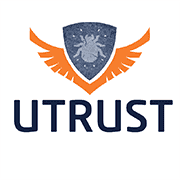Accessibility Testing
Accessibility testing is a software testing technique that is used to evaluate the usability of an application for users with disabilities. The purpose of accessibility testing is to ensure that the application can be used by people with disabilities, including those with visual, auditory, motor, and cognitive impairments.
Accessibility testing typically involves testing the application’s ability to meet the Web Content Accessibility Guidelines (WCAG). The WCAG provide a set of guidelines for making web content more accessible to people with disabilities. The results of accessibility testing are used to ensure that the application can be used by people with disabilities. If any accessibility issues are identified during testing, they are investigated and resolved before the application is released. Accessibility testing is an important part of the software testing process, as it helps to ensure that the application is accessible to a wider audience and meets the needs of all users, regardless of their abilities.
UTrust can help our clients by providing comprehensive accessibility testing services that ensure their software applications are accessible and usable for users with disabilities, such as visual or hearing impairments. Here are some specific ways we can assist our clients with accessibility testing:
- Test Planning and Strategy: UTrust can work with our clients to develop an accessibility test plan and strategy that aligns with their business goals and objectives. Our accessibility test planning and strategy services can help our clients identify accessibility requirements, prioritize testing activities, and develop test cases and scenarios that cover all aspects of their software applications.
- Test Execution: UTrust can execute accessibility tests on our clients’ software applications, using manual and automated testing methods. Our test execution services can help our clients identify accessibility issues, while ensuring that their software applications are accessible and usable for users with disabilities, such as visual or hearing impairments.
- Assistive Technology Testing: UTrust can perform assistive technology testing on our clients’ software applications, ensuring that they are compatible and work seamlessly with assistive technologies, such as screen readers, magnifiers, and alternative input devices.
- User Interface Testing: UTrust can perform user interface testing on our clients’ software applications, ensuring that they are designed and developed to support different accessibility features, such as high contrast modes, adjustable font sizes, and keyboard navigation.
- Compliance Testing: UTrust can perform compliance testing on our clients’ software applications, ensuring that they comply with accessibility standards, such as WCAG 2.0 and 2.1, Section 508, and ARIA.
Overall, UTrust‘s accessibility testing services can help our clients ensure that their software applications are accessible and usable for users with disabilities, while complying with accessibility standards and regulations, such as the Americans with Disabilities Act (ADA) and the Web Content Accessibility Guidelines (WCAG).

